Since the middle of October I have been attempting to trace the history of the concept “counter-Enlightenment.” I set out on this venture convinced that Zeev Sternhell’s account of the history was wrong and confident that the sketch that I had offered a few years ago in a paper delivered at the meetings of the American Historical Association captured enough of the story to need only relatively minor adjustments. My agenda in commencing these posts was to figure out just what those adjustments might be. But one of the peculiar features of carrying out this exercise (an exercise that, as Hegel somewhat snidely described his friend Schelling’s early publications, amounts to “conducting one’s education in public”) is that it sometimes leads in unexpected directions. While I have already run into quite a few surprises along the way (e.g., the diversity of German uses of the term, the unexpected appearances of the term in English during the first half of the twentieth century, and so on), the biggest one came at the end.
Like most people who have written on the topic, I blithely assumed that Isaiah Berlin would loom large in the account I was constructing. While it has been obvious for some time that Berlin did not actually invent the term, he is generally viewed as having played a central role — if not the central role — in popularizing it. On that point, both his admirers (e.g., Joseph Mali and Robbie Wokler) and his critics (e.g. Zeev Sternhell) could agree.1
However, as my survey of uses of the term has come closer to Berlin’s first employment of the term in his 1973 entry on the topic in the Dictionary of the History of Ideas, I have begun to suspect that this way of thinking about Berlin’s role rests on a false premise: namely, that his use of the term marked a significant change in the way in which the concept was being used. After working my way through the myriad uses of the term by American historians, literary critics, and social critics during the 1950s and 1960s, I have found myself wondering whether it makes sense to assume that the appearance of Berlin’s entry in the Dictionary of the History of Ideas had much impact on the use of a term that, by 1973, was by no means unfamiliar. There are good reasons for continuing to see Berlin as closely associated with the concept. But I think that there is little reason to see him as having had a significant influence on the way in which the term was being used.
An Overview of Usage 1950-1974
If we look at an Ngram of occurrences of the term “counter-Enlightenment” during the last half of the twentieth century what is perhaps most striking is that Berlin’s article in the Dictionary of the History of Ideas does not appear to have had much of an impact on the frequency with which the word was used.
It appears that, when Berlin wrote his article on the concept, he was discussing a term that had been used, off and on, throughout mid-1950s (working my way through the various texts that used the concept prior to Berlin’s famous article has been one of the main reasons why this series of posts have taken so long to complete).
Which, if any, of these uses of the term he might have known about remains, and probably will remain, an open question. He had been in contact with Trilling from 1952 and the two kept up a lengthy (albeit, rather uninteresting) correspondence until Trilling’s death in 1975, but there is no solid evidence that he was aware of the exchanges between Trilling and Barrett in Partisan Review. It is hard to see how he could have avoided coming across the term Gegenaufklärung in the course of his reading of German histories of philosophy, but I have not done a systematic search of the texts he cites to see whether the term in there. At this point, all that can be said with any confidence is that when he wrote his article on “Counter-Enlightenment” for the Dictionary of the History of Ideas he took up a term that had been used by scholars working in a number of different disciplines. He was the first to write an extended discussion of the concept, but he was far from the first to employ the term.
Further, it would appear that his initial use of the term had little or no immediate impact on the subsequent popularity of the term. The major uptick in usage came in the wake of the publication of Against the Current, though the peak usage of the term would not arrive until around 1995. Isaiah Berlin was an early adopter of a term that, for reasons unrelated to his use of it, was already in the process of entering into a broader usage.
To appreciate this point, it might be useful to contrast the Ngram for “counter-Enlightenment” with that of a term that would enter into general usage over the next few decades:
This is what it looks like when someone invents a term that catches on and is taken up by others. Unlike “counter-Enlightenment”, the trajectory of “deconstruction” resembles the pattern of usage for those words that are used to designate things that needed to be invented before we could name them.
In contrast, “counter-Enlightenment” was a term that was employed to designate traditions of thought for which we already had a variety of names (e.g., “enemies of the Enlightenment,” “critics of the Enlightenment,” “Romantics,” etc.).
The idea that “counter-Enlightenment” was term that had only recently been coined was implicit in the question Ramin Jahanbegloo posed to Berlin in a 1991 interview: “Who invented the word ‘counter-Enlightenment?” It is worth noting that Berlin seems (rightly, I think) to have been taken aback by the question:
An American wrote a book on “Counter-Renaissance”. I don’t know who invented the concept of “Counter-Enlightenment.” Someone must have said it. Could it be myself? I should be somewhat surprised. Perhaps I did. I really have no idea.2
Berlin had every reason to have been confused. “Counter-Enlightenment” is not the sort of term that needed to be “invented.” The pieces from which it could be constructed had been lying around since the close of the eighteenth century and the terms “counter-Reformation” and “counter-revolution” served as readily available paradigms for showing how it could be assembled.
That Berlin began his puzzled response by recalling Hiram Haydn’s 1950 book on The Counter-Renaissance suggests that he was aware of the ubiquity of such constructions.3
It could, nevertheless, be argued that though Berlin’s 1973 entry in the Dictionary of the History of Ideas may not have popularized a term that already enjoyed a limited usage among specialists, the republication of the article in Against the Current marked the point at which the term began to enter into a broader usage. This interpretation has some support in the Ngram for the term (especially if we assume that it might have taken some time for Berlin’s discussion of the term to reach a broader audience. But it is essential to know whether those who were making use of the term after 1980 were actually influenced by Berlin, rather than continuing to draw on earlier patterns of usage.
Dan Edelstein recently called my attention to the uses to which the data visualization tools now available on JSTOR can be put. While I’m not entirely confident in the results I’ve gotten from playing around with them, they allow us to distinguish articles that use the term “counter-Enlightenment” from articles that employ both the terms “counter-Enlightenment” and “Isaiah Berlin.” The rationale for drawing such a distinction is that, just as early articles that employed the term “deconstruction” would have been likely to mention Jacques Derrida at some point, so too an article that invoked the “counter-Enlightenment” — were it, in fact, a term that had entered into general usage because of Berlin’s discussion of it — might be expected to mention Isaiah Berlin at some point. But this does not appear to be the case.
Here are plots of the number of articles using the term “counter-Enlightenment” (or its variants: JSTOR searches are case-insensitive) and those in which both the terms “Isaiah Berlin” and “counter-Enlightenment” occur.4
The main point to take away from this is that while the “counter-Enlightenment” turns up with some regularity in articles archived JSTOR over the last quarter of the twentieth century, there are only five years in which Isaiah Berlin’s name appears in more than a third of the articles in which the term “counter-Enlightenment” appears: 1974 (66%), 1981 (33%), 1983 (39%), 1994 (36%), and 1996 (32%). Some of these results are easy to explain: 1974 (which saw a paltry three uses of the term) was the year after the publication of the Dictionary and two of those uses of “counter-Enlightenment” mention Berlin. The 1981 results were likely influenced by the appearance of Against the Current, which was widely reviewed. The Magus of the North was published in 1993, which may explain the results from 1994, while the figures from 1996 may have something to do with the publication of the collection The Sense of Reality and John Gray’s study of Berlin (which included a chapter on “Romanticism and the Counter-Enlightenment”), a combination that provided an opportunity for a series of articles offering a general assessment of Berlin’s career. I have no idea what explains what is going on in 1983.
None of this, of course, rules out the possibility that Berlin’s work may, in ways too subtle to document, have inspired others to take up the term. But it does suggest that those who were using the term felt little need to credit him for a concept that he had allegedly popularized.
Having spent more than enough time attempting to assess Berlin’s alleged role in popularizing the concept, it may be useful to explore some of the ways in which the term “counter-Enlightenment” was being used before 1973, particularly in the wake of what was assumed (prior to Henry Hardy’s recent inventory of uses of the term) to have been its first appearance in English: the use by William Barrett in the Partisan Review. JSTOR turns up 15 article that used the term between 1949 and 1973. A considerably less reliable search on Google Books lists 58 items using the word during the same period, though this figure is inflated by the usual combination of bad metadata, repetition of items, and texts that cannot be accessed to confirm that there is actually anything present.5 Still, we have more than enough examples from this period to suggest that the term was being used, in slightly different ways, by a number of scholars (some of them with clear connections to each other) working in three areas: 1) literary criticism, 2) intellectual history, and 3) social theory. So let’s stop counting texts and start reading them.
Literature & the Counter-Enlightenment
One of the earliest uses of the term by a literary critic was directly inspired by the 1949 exchanges between Barrett, Chase, and Trilling in Partisan Review: William Van O’Connor’s 1950 discussion of Lionel Trilling’s Critical Realism” in the Sewanee Review.6 O’Connor had worked with Trilling in the late 1940s and received his doctorate in 1948. His article took the publication of Trilling’s Liberal Imagination as the “occasion for a general examination of Trilling’s critical position” (482).
O’Conner began this examination by reiterating the parallel Trilling himself had drawn (in the brief introduction to The Liberal Imagination) between his position and that of John Stuart Mill and proceeded to flesh out Trilling’s analogy with a series of quotations from the Partisan Review exchanges (since the article contained no citations, the provenance of the quotations would have escaped most readers):
Matthew Arnold, himself an ardent liberal, took it upon himself to criticize the liberal mind. Lionel Trilling, our best student of Arnold and one of our most astute critics, has devoted himself both in fiction and criticism to examining those assumptions of the liberal mind that are themselves serious threats against a democratic liberal order.
Many liberals tend to think themselves morally, politically, and philosophically above their fellows; but Trilling has reminded them that even they, “the residuary legatees of the Enlightenment,” are subject to error, that in its pride liberalism will “unless purged and enlightened by a critical effort of great seriousness inevitably corrupt and betray itself into the very opposite of its avowed intention of liberation.” (482).
O’Conner returned to the Partisan Review exchanges a few pages later, noting, “One of Mr. Trilling’s most significant points is that the Enlightenment is merely one aspect of our intellectual heritage.” He went on to quote Trilling’s charge that “contemporary liberalism seems incapable of responding to the realistic values of Romanticism which, equally with the idealistic values of the Enlightenment, are properly part of its heritage.”7
To the extent that O’Connor had much to say about the Enlightenment, his characterization amounted to the usual set of clichés: e.g., “Another of our inheritances from the Enlightenment is the assumption that knowledge is only that which can be tested and labeled genuine in a scientist’s laboratory” (489). Somewhat predictably, he saw the Enlightenment as narrowly “rationalistic,” which enabled him to follow Trilling in presenting the counter-Enlightenment as a necessary corrective: it is “a movement that does not destroy but that qualifies and modifies our rationalistic tradition” (490).
These same moves were repeated, some two decades later, in Francis Russell Hart’s account of the English Gothic novel.8
Seen from our perspective, the Gothic signals a counter-enlightenment, climaxing an era naive in the fervor of its scientific naturalism, its rationalism, its benevolism, its commitment to the norms of “common sense.” The Gothic novelist, still “enlightened” but imperfect in his skepticism, gave to fiction a post-Enlightenment preoccupation with the preternatural, the irrational, the primordial, the abnormal, and (tending to include the rest) the demonic. (86)
Hart went on to argue that, while the function of the Gothic was to “rehabilitate” the “extra-rational,” this might best understood as an attempt to extend rather than reject the Enlightenment by “adopting and complicating” its “most representative literary invention, the novel” (86). This sets the stage for the claim that the Gothic novel represents
the reflection in fiction of the counter-enlightenment premise John Stuart Mill located in the Germano-Coleridgians: the Enlightenment had erred from a totally inadequate conception of human nature (88).
It is difficult to avoid the impression that, in discussions such as this, the author is working from a manual written by Trilling, checking off each move as he proceeds.9
Similar tropes can be found in the emerging field of American Studies, where a counter-Enlightenment was being assembled from some of the same figures who had been discussed in the studies by Chase that sparked the Partisan Review exchanges in the first place. For example, Leo Marx, in a discussion of the methodology of American studies that dates from shortly after the publication of his influential Machine in the Garden (1964), noted,
Writers like Thoreau and Melville,on the other hand, whose intellectual affinities were with the romantic turned the device [i.e., the image of the “machine in the garden”] into a dark counter-Enlightenment metaphor of contradiction.10
It should also be noted (as I discussed in the previous installment in this series) that Daniel Aaron, who had played a role in shaping this field, had already employed the term a decade earlier in his 1954 American Quarterly article “Conservatism, Old and New.”
Finally, the term appeared in a 1961 article on Thomas Mann’s Doctor Faustus by Joseph Frank, who would later gain fame as a Dostoevsky scholar. Frank’s early career had included studies at University of Wisconsin, a stint as a reporter in Washington during
World War II, a doctorate from Chicago’s Committee on Social Thought, and occasional articles for Partisan Review. What is perhaps most striking about his piece on Doctor Faustus is its stress on a “counter-Enlightenment” that includes considerably more troubling thinkers than the assortment of “Germano-Coleridgians” and Romantic poets typically invoked by those who followed Trilling’s lead.
Far from treating the counter-Enlightenment as a useful corrective to the “rationalist” excesses of the Enlightenment, Frank reminded his readers of its more problematic role in recent history.
After the defeat of Germany in the first World War, German culture was inundated by a flood of doctrines and attitudes exemplified by such names as Spengler, Ludwig Klages, Bachofen, Ernst Junger, Stefan George and tutti quanti. All these novelists, philosophers and, poets, Mann noted in an important article on Freud (1929), stress “the impotence of spirit and reason while … by contrast contrast the powers of the lower regions, the dynamic of of passion, the irrational, the unconscious, is exhibited with bellicose piety.” Whether or not, the writings of these men served as the intellectual and spiritual precursors of Nazism; Thomas Mann, who felt this whole movement as a perversion of his own deepest values, recommended Freud as an antidote in the courageous struggle he waged both as publicist and artist against this movement.11
The article to which Frank referred was Mann’s 1929 lecture Die Stellung Freuds in der modernen Geistesgeschichte, which had been originally delivered in May 1929 before the Munich Democratic Students’ Club and which sought to counter the National Socialist valorization of myth by situating Freud’s work in the context of a struggle between the Aufklärung and the Gegenauklärung that stretched back into the nineteenth century.12
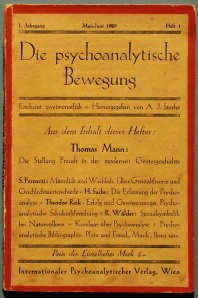 Unlike “Freud and the Future” — Mann’s later, and more famous, discussion of Freud — the Munich lecture was never translated into English, which meant that Mann’s discussion of the Gegenaufklärung would remain unknown to his Anglophone audience. The peculiar task that Mann set for himself, at a time when (as Anthony Kauders has documented in a useful article) Freud’s alleged “rationalism” was routinely denounced by Weimar psychologists who took their lead from Klages, Heidegger, and others who judged Freud insufficiently appreciative of the nurturing powers of mythos, was to defend psychoanalysis as “the only form of modern anti-rationalism which does not invite reactionary abuse.”13 In developing this argument, Mann took his point of departure from Nietzsche’s own complex stance towards the Enlightenment, which Mann characterized as an effort to press the forces of reaction into the service of a new Enlightenment. Mann, as Frank explained, was abundantly aware that things had not worked out as Nietzsche had hoped:
Unlike “Freud and the Future” — Mann’s later, and more famous, discussion of Freud — the Munich lecture was never translated into English, which meant that Mann’s discussion of the Gegenaufklärung would remain unknown to his Anglophone audience. The peculiar task that Mann set for himself, at a time when (as Anthony Kauders has documented in a useful article) Freud’s alleged “rationalism” was routinely denounced by Weimar psychologists who took their lead from Klages, Heidegger, and others who judged Freud insufficiently appreciative of the nurturing powers of mythos, was to defend psychoanalysis as “the only form of modern anti-rationalism which does not invite reactionary abuse.”13 In developing this argument, Mann took his point of departure from Nietzsche’s own complex stance towards the Enlightenment, which Mann characterized as an effort to press the forces of reaction into the service of a new Enlightenment. Mann, as Frank explained, was abundantly aware that things had not worked out as Nietzsche had hoped:
… while Nietzsche saw himself as carrying forward the banner of Enlightenment inscribed with the names of Petrarch, Erasmus and Voltaire, there is a little doubt that his own work had given a mighty impulse to the counter-Enlightenment holding the field in the Twenties. “Following in Nietzsche’s footsteps” Mann writes, “whose battle against Socrates’s enmity to instinct so pleases our prophets of the unconscious … following in his footsteps all the anti-rational tendencies of the 19th century have continued to our own day; In the more extreme cases, of course, not so much in his footsteps as over his body” (23).
While there is much here that needs to be sorted out (including a further discussion of just what Nietzsche might have been doing with Aufklärung and Gegenaufklärung in the peculiar sketch discussed in the opening post in this series) for now it may be enough to note that the relationship between Enlightenment and counter-Enlightenment that Mann was articulating in this lecture was far removed from the way in which it was understood by those admirers of Trilling whose understanding of the Enlightenment seems to have been limited to the set of cliches circulating among admirers of English Romantics for at least the last century. Nowhere is the disjuncture between Frank’s discussion and Trilling’s clearer than in the passing comments on Freud’s 1929 lecture that appear in the chapter on “Freud and Literature” in The Liberal Imagination.
The chapter originated in a 1940 contribution to a Kenyon Review symposium on Freud’s legacy.14 Though the absence of references of any sort makes it difficult to be sure, it would seem that Trilling’s comments on Mann’s “first essay on Freud” are directed at the Munich lecture (it does not help that it is unclear whether Trilling’s German was good enough for him to be able to follow Mann’s argument). Trilling takes Mann to task for failing to appreciate the degree to which Freud’s position was “militantly rationalistic” and “positivistic”:
If Freud discovered the darkness for science he never endorses it. On the contrary, he makes attendant upon his rationalism all the ideas of Enlightenment that have traditionally gone along with it and that give no validity to myth or religion; he holds to a simple materialism, a simple determinism, to atheism, to a rather limited sort of epistemology (41).15
While Trilling grants that this “rationalistic positivism” was the source of “much of Freud’s strength and what weakness he has,” it quickly becomes clear that Trilling’s chief concern lies with Freud’s weaknesses:
The strength is the fine clear tenacity of his positive aims, the goal of therapy,the desire to bring to men a decent measure of earthly happiness. But upon the rationalism must also be placed the blame for the often naïve scientific principles which characterize his early thought — they were later much modified — which consist largely in theories for his theories a perfect correspondence with an external reality, a position which, for those who admire Freud and especially for those who take seriously his views on art, is troublesome in the extreme (41-42).
What is perhaps most striking here is Trilling’s failure to comprehend either the political context in which Mann was working or the relationship between progress and reaction that he would go on to develop in Doctor Faustus. But to understand any of this, Trilling would have had to appreciate that “the counter-Enlightenment” was populated by nastier figures than Mill’s clubby Coleridgians and that the Enlightenment was neither as rationalist nor as narrow as he assumed.
History & the Counter-Enlightenment
The term also appears quite frequently in works written by historians during the 1950s and 1960s and, in most cases, serves as a way of designating the period that follows — and is populated by thinkers who are opposed to — the Enlightenment. Indeed, the usage seems to be so well-established and consistent that I suspect that it is likely that the term was a commonplace among historians well before Berlin’s article in the Dictionary.
For example, as early as 1955 it turns up in a Stanford University doctoral dissertation on Feuerbach, where it functions as the title of the opening chapter, which sketches the intellectual climate to which Feuerbach was reacting.16 The historian Henry May used it the next year in an article which, summarizing an unpublished 1952 lecture by Henry Nash Smith (who, like Daniel Aaron and Leo Marx was a pioneer in the field of American Studies), explained that Smith contrasted
two diametrically opposite points of view which … have divided our culture since 1910. One he calls the realistic-progressive view and the other the counter-enlightenment; the one takes for its standards measurable welfare and humanitarian progress and equality; the other values only the individual imagination, nourished on tradition, holding out desperately against a mechanized culture, and accepting if necessary alienation and despair as the price of its survival.17
It turns up again, though in a somewhat different sense, in a review of a book on the development of the concept of academic freedom in the United States:
The Enlightenment liberated the academic mind, as it did others, but it also produced a counter-Enlightenment, an incredible proliferation of sectarian colleges. By 1860 the 182 widely scattered American colleges were, by European standards, provincial colleges. Its professors were generally regarded, and all too often regarded themselves, as paid purveyors of tradition, not as free men with the professional right and professional function to discover and teach new truth.18
Two years later, a reviewer of Maurice Crouzet’s L’Epoque Contemporaine: A La Recherche D’une Civilisation Nouvelle offered a few reflections that echoed Daniel Aaron’s characterization of American universities as awash in a “counter-enlightenment.”
One wonders, as one goes along, is it merely one’s North American touchiness,or are the strictures on the United States not rather more conventional and barbed than any of the comments about the Stalin era? Will time and distance justify the characterization of American intellectual and university circles as now enjoying “a counter-enlightenment,” while the Soviet scene is dismissed obliquely as being the product of “the special conditions in which the Soviet Union has existed since 1917”?19
By the 1960’s the term was being used in ways that suggest that it had become a device for characterizing periods that, in some cases, were rather far removed from the immediate context of the eighteenth-century Enlightenment. For example, readers of the 1964 textbook An Age of Controversy: Discussion Problems in Twentieth-Century European History would have encountered the following:
Among the descriptive labels that have been proposed for the twentieth century is “the Counter-Enlightenment.” The phrase suggests a total reversal of that mood of optimism and hope, the confidence in man’s ability to understand and improve himself through reason, that marked the thought of so many eighteenth-century philosophes.20
It turns up again in a review of The Icon and the Axe, James Billington’s study of Russian culture.
A great virtue of the book is the detail it encompasses. Three notable examples are the onset of the schism under Alexis, the varied western influences that flourished under Catherine II, and an identification of the precise counter-enlightenment features at the beginning of the nineteenth century.21
Richard Clogg’s 1969 discussion of Greek Orthodox resistance to French Revolutionary propoganda contained the following sketch of Athanasios of Smyrna:
He was perhaps the most virulent and prolific of the numerous Orthodox antagonists of Western thought,who make what may perhaps be termed the Greek ‘Counter-Enlightenment’ such an interesting phenomenon. In his Antifonisis or answer to the absurd fervour of the ‘philosophers’ coming from Europe, demonstrating that the harm which they do to our nation is vain and nonsensical, and teaching what is in fact the real and true philosophy. To which is added a most beneficial exhortation to those sending their sons to Europe for education . . . (Trieste, 1802) he sought to warn parents of the grave spiritual dangers their children underwent in seeking an education in Europe, which was none other than “a chaos of corruption the very brink of Hades.” Those who studied in the West ran the risk of losing their senses or of sinking into Popery. For good measure,he denounced Plato as “woman-obsessed, a pederast and a parasite.”22
And, to round out this list, in 1971 R. R. Palmer drew a parallel between the polemics of the “Counter-revolution” and those of the “Counter-Enlightenment” in his World of the French Revolution.23
Social Theorists
Finally, the term can also be found, from time to time, in works written during this period by social theorists. The concept played a prominent role in a 1956 Dissent article by the Brandeis political scientist (and, later, Boston University sociologist) E. V. Walter that explored the concepts of “the elite and the masses.”24 Like Aaron, Walter characterized the current period as a time in which a “counter-Enlightenment” was on the ascent:
The men of the Progressive movement thought of themselves as children of the Enlightenment, armed with instrumentalism and the scientific method, fated to conquer ignorance, break the tyranny of vested interests and usher in the shining future. Now that Progressivism has run its course and reached its time of troubles, it is no wonder that the specter of the counter-Enlightenment should return to haunt it, and that the ghosts of Burke, Maistre and company should be conjured up to mock it. In response, embattled liberals exhume their own departed heroes, and the air is filled with the noise of shades locked in combat, the wail of ghostly polemics, the rattle of old bones.25
Walter argued that the polemics from an earlier age that had now been revived included Burke’s image of the masses as a “swinish multitude.”
Today, this image of the masses-as-barbarians is a negative vision, formed in reaction to the Progressive vision of an emancipated and omnipotent People marching inexorably Forward. The involution of this image, made popular by writers as similar in mind and diverse in talent as Ortega y Gasset, Walter Lippmann and Peter Viereck, is based on an aristocratic conception of political life that sees humanity as divided into two species: the primitive formless mass, and the élite, which is evolved, refined and purified from the mass and, presumably, restrained by inner controls.
Where the Enlightenment had located the sources of social evil in the rule of “corrupt élites,” the revived “counter-Enlightenment” saw the source of the pathology as residing with the “revolt of the masses.”
Walter was willing to grant that there might be a certain plausibility to the arguments of the counter-Enlightenment, but he also noted that the argument was not without a certain irony:
The insistence on the “imperfectability” of man, dinned into our ears lately, contains a staggering irony if one considers that it is educators, professors, journalists and other professional moralists who are writing in this vein and consequently declaring that their function in society is entirely useless. There is no reason for their existence if it is true that men, or even the masses, are unchangeable. He who denies human “perfectibility” is an immoral moralist because he prevents it from becoming real.
He concluded by noting that
the revival of counter-Enlightenment images has many special causes and functions. In a highly industrialized society, where solidarity is largely created by impersonal and mechanical bonds, the myth of the good Public or its involution, the bad Masses, is an abstraction that creates a false social unity.
The “masses” are not savages or beasts to be restrained by institutional devices, but human persons whose nature is social, who are capable of evil as well as good, who may be harried, intimidated and provoked into abnormality and delinquency, but who will find happiness only in the good. In a climate of distrust and fear, any individual and any group is a potential menace, but when these conditions are removed, people will respond with changes of “nature” that are incredible and profound.
What I find most intriguing about Walter’s use of the term (aside from having known him but not having realized that he was among the early users of the term that Isaiah Berlin didn’t invent) is the ways in which he sought, like Mann (and, like Freud and Nietzsche as read by Mann) to turn the arguments of the counter-Enlightenment against it and use them in the service of the hopes that had once been nourished by the Enlightenment. In that effort, he was keeping faith with the project that Theodor Adorno sketched in Minima Moralia: “Not least among the tasks now confronting thought is that of placing all the reactionary arguments against Western culture in the service of progressive enlightenment.” It is likely that he was aware of the ways in which his efforts were linked to this tradition: his Brandeis colleagues included Herbert Marcuse.
This interest in the possibility that reaction and revolution might be more closely intertwined than it is sometimes assumed can also be found in a book on Georges Sorel by the sociologist and critic Irving Louis Horowitz. It began by noting,
Sorel was more akin to the Counter-Enlightenment critiques that wafted out of German through the writings of Herder and Hamann, than to the French romanticism of Zola and Hugo, which through all its broodings about the agonizing alienation of modern man kept faith with the principles of progress and liberty.26
Finally, at the close of the 1960s, the journal Salmagundi published a translation of Jürgen Habermas’ discussion of Ernst Bloch.
Utopia, realized, would be “different.” This awareness of a limit certainly does not suspend its consciousness, nor would it justify a renunciation of utopian by the militants of the counter-enlightenment. The propaganda against the Jacobin results utopian beginnings may lead to, the hypocritical preachments against the terror of morality only increase the dangers to which they blind us.27
This translation, awkward though it may be, is significant not just because it is one of the first of Habermas’ texts to appear in English. Unless I have missed something (which is always a possibility in this sort of work) it marks the first translation of the German Gegenaufklärung into English.
Conclusion: Isaiah Berlin & the Dictionary of the History of Ideas
Towards the end of Zeev Sternhell’s discussion of Isaiah Berlin’s thought it becomes clear that Sternhell not only views Berlin’s account of the relationship between the Enlightenment and the counter-Enlightenment as flawed (a judgment that, it might be noted, is not unique to Sternhell) but also sees Berlin as one of the Enlightenment’s craftier, and more effective, enemies (a judgment that may well be unique to Sternhell).
It was precisely because Berlin was always able to position himself at the heart of the liberal establishment that there are few men who did more harm to the tradition of the Enlightenment than he did. Relativism is inherent to anti-Enlightenment thought, and despite his attempts to show otherwise, Isaiah Berlin, like Herder, was a relativist who refused to declare himself (418).
In Sternhell’s account, what attracted Berlin to the counter-Enlightenment was its rejection of the idea that it was possible to provide a single answer to what constitutes a “good life.” While others might have been confused enough (or, perhaps, corrupted enough?) to think that the possibility that individuals may have rather different conceptions of the nature of a good life but, nevertheless, find ways of living together peacefully is one of the central premises on which liberalism rests, Sternhell would appear to view Berlin’s pretensions to liberalism as a charade. And that opinion, he notes, was shared by at least one other critic:
Berlin’s relativism did not escape the notice of Leo Strauss. Strauss was the only one of the great figures of the period not to have hesitated, at the time of its appearance, to reveal the reality behind the inaugural lecture, “Two Concepts of Liberty.” … He immediately understood the significance and political purpose of the … lecture, and was not swept off his feet by what Berlin had done. One should not hide the fact, he said in 1961, that this formula ‘is very helpful for a political purpose — for the purpose of an ‘anti-Communist manifesto designed to rally all anti-Communists.’ In other words, Strauss saw this text as simply a pamphlet of the cold war. … Finally, said Strauss, ‘Berlin’s statement seems to me to be a characteristic document of the crisis of liberalism — of a crisis due to the fact that liberalism has abandoned its absolutist basis and is trying to become entirely relativistic.’ (417-418)
It is unfortunate — or perhaps, as Sternhell likes to say, “it comes as no surprise” — that Sternhell shows little interest in tracing Strauss’s own views on the contribution of the Enlightenment to the shaping of modern liberalism back to the spring of 1941 when this (then chastened?) defender of “fascist, authoritarian, and imperial principles” who had proudly refused to “crawl to the cross of liberalism” gave a lecture at the New School for Social Research that, in the fashion of the day, explained how National Socialism had been the result of the nihilism spread by the Enlightenment.28
 Intent on documenting the Cold War roots of Berlin’s account of the Enlightenment (a project that is nowhere near as questionable as his book sometimes makes it seem), Sternhell devotes little attention to Berlin’s article on “the Counter-Enlightenment.” It is as if, having assumed that Berlin was a friend of the enemies of the Enlightenment, it would be “no accident” for him to have contributed an article on their behalf to the Dictionary of the History of Ideas.
Intent on documenting the Cold War roots of Berlin’s account of the Enlightenment (a project that is nowhere near as questionable as his book sometimes makes it seem), Sternhell devotes little attention to Berlin’s article on “the Counter-Enlightenment.” It is as if, having assumed that Berlin was a friend of the enemies of the Enlightenment, it would be “no accident” for him to have contributed an article on their behalf to the Dictionary of the History of Ideas.
What has long puzzled me about Berlin’s article is the question of how it wound up in the Dictionary in the first place. At the risk of belaboring the obvious, there would seem to be at least two possibilities:
- Berlin was invited to write it by the editors of the work.
- Berlin proposed the idea for such an entry and the editors accepted it.
The first is the normal way in which articles turn up in reference works: editors solicit articles from authors and authors deliver what was solicited (hopefully at a price that makes the exercise worthwhile). If, as it was once believed, “counter-Enlightenment” was a term that had little, if any, usage in English prior to Berlin’s “invention” or “popularization” of it, it would be difficult to understand why anyone would be soliciting an article on it from him (an article on “Romanticism” or “Liberty” perhaps, but an article on “Counter-Enlightenment”? Unlikely.)
The second option has one thing in its favor: Isaiah Berlin was not simply a contributor to the Dictionary, he was also on its editorial committee. This would have provided him with opportunities not normally available to contributors, including the possibility of suggesting a topic on which he wanted to write. But there is no reason to suppose that he was granted a carte banche and it is hard to see how the other editors of the Dictionary could have accepted a contribution on a topic that did not enjoy a certain currency.
I am inclined to think that it was Berlin who proposed the topic, but the survey I’ve provided supports either possibility. Having been engaged in research of a group of thinkers that might not easily fit into the existing topics that the Dictionary would be surveying, he may have proposed writing an article on “Counter-Enlightenment.” That the editors did not regard this proposal with the blank stare that they would have regarded a proposal for an article on the topic “Deconstruction” is easily explained: there is every reason to believe that this would have been a term that, by 1973, was reasonably familiar to them.
The examples I have present here could also support the first possibility: reviewing the topics to be covered in the Dictionary, the idea of an entry on “Counter-Enlightenment” might have been proposed and Berlin, who had done work on those thinkers who were associated with it, was invited to write it. This explanation, like its alternative, presupposes that “Counter-Enlightenment” was hardly an unknown term. And, on the basis of the evidence I have presented here, there is every reason to assume that, by 1973, was quite familiar.
Further evidence that “Counter-Enlightenment” was not an neologism can be seen in the response of reviewers of the volume. Reviewing the volumes for the Journal of the History of Ideas, F.E.L. Priestley seamlessly added the term to the titles of a series of other entries noting
Periodization itself gets illustrated and further analyzed in the Idea of Renaissance Humanism in Italy, Renaissance Humanism, Renaissance Literature and Historiography, Enlightenment, and the Counter-Enlightenment.”29
Likewise, the first reviewers of Against the Current found nothing peculiar about the term, even when they expressed reservations about Berlin’s account of it. Russell Jacoby’s critique in Salmagundi had no difficulty finding previous discussions of the topic to which Berlin’s might be contrasted:
It may be unfair to make comparisons, but one cannot help feeling that, on almost any subject, Berlin’s inquiries are less strenuous than others that come readily to mind. Compare Karl Mannheim’s “Conservative Thought” with Berlin’s “The Counter-Enlightenment”; or Franz Neumann’s “Montesquieu” with Berlin’s treatment.30
And the philosopher Stanley Rosen, reviewing the book for the Journal of Modern History, argued,
This failure to engage Nietzsche, together with the superficial treatment of Fichte and Hegel, is one of the two decisive weaknesses of this volume, which undertakes to discuss the dialectic of Enlightenment and Counter-Enlightenment, if not systematically, surely as a defense of freedom and liberalism.31
Rosen’s characterization of the book is significant for one further reason and, with a brief consideration of it, I can at last bring this series of posts to a close.
It is likely Rosen was not alone in sensing that the article on “Counter-Enlightenment,” which — understandably — opened the volume (where else could it go?), laid out the overarching concerns that informed the other essays in the volume. It provided readers with a way of understanding how Berlin’s previously uncollected contributions to the history of ideas might be related to his more familiar work in political philosophy. From this emerged the now-familiar image of Berlin as a defender of liberalism who drew on the intellectual resources of the so-called “counter-Enlightenment” to curb the totalitarian tendencies that had plagued Enlightenment thought. Once this connection had been made it was hardly surprising that “Isaiah Berlin” and “the Counter-Enlightenment” would come to be closely associated.
For this reason, the important question about the relationship between Isaiah Berlin and the concept of “the Counter-Enlightenment” turns out not the one that Ramin Jahabegloo asked and which a few of us have been trying to answer. Rather than determining “Who invented the “Counter-Enlightenment,” it might be more important to ask “Who did the Counter-Enlightenment invent?” That, I suspect, is a question that has a clear answer: “the author known as ‘Isaiah Berlin’.”
- Joseph Mali and Robert Wokler, eds., “Isaiah Berlin’s Counter-Enlightenment,” Transactions of the American Philosophical Society 93, no. 5, New Series (2003). Zeev Sternhell, The Anti-Enlightenment Tradition (New Haven: Yale University Press, 2010). ↩
- Isaiah Berlin and Ramin Jahanbegloo, Conversations with Isaiah Berlin (New York: Scribners, 1991) 69-70 ↩
- Hiram Collins Haydn, The Counter-Renaissance. (New York Scribner, 1950). As Baird W. Whitlock notes, the origins of this term can be traced back to the 1930s. See “The Counter-Renaissance,” Bibliothèque d’Humanisme et Renaissance 20:2 (1958): 434–449. ↩
- Obviously, the first plot contains all of the articles that are turning up in the second plot.
↩ - To take but one example: Google’s list includes Georges Arnaud’s Sweet Confession (1959), which it lists as somehow “related” to Darrin McMahon’s Enemies of the Enlightenment ↩
- William Van O’Connor, “Lionel Trilling’s Critical Realism,” The Sewanee Review 58:3 (1950): 482–494. ↩
- The Trilling quote comes from Trilling’s “Rejoinder to Mr. Barrett,” in Partisan Review XVI:6 (1949) 654. ↩
- “The Experience of Character in the English Gothic Novel”, in Roy Harvey Pearce, ed. Experience in the Novel: Selected Papers from the English Institute, Columbia University Press, 1968 ↩
- For more of the same, see the characterization of Sir Walter Scott at the start of Francis Russell Hart, Scott’s Novels : “he was of the counter-enlightenment. It is as misleading to call him anti- Romantic as it is to call him Romantic,” (4) an interpretation that was praised by Geoffrey Hartman in a 1966 survey of recent works on nineteenth-century literature: “It is one of the virtues of Francis R. Hart’s Scott’s Novels … that he refuses to submerge practical criticism in the debate over whether Scott is Romantic or anti-Romantic. He calls him, neatly, of the “counter-enlightenment,” and in this matter, as in all others, refuses to “essentialize” and reduce the novelist to one orthodoxy. He is tireless in making distinctions against the simplifiers, and tireless, not to say faithful, in writing about the entire canon of Scott’s novels. He mentions that the conservatism of Scott may be close to that of Burke and Coleridge, but immediately quotes Lukacs on how profoundly he differed from such “antirevolutionary pseudohistoricists” as Burke and Joseph De Maistre”, “Recent Studies in the Nineteenth Century,” Studies in English Literature, 1500-1900 6:4 (1966): 767. ↩
- Leo Marx, “American Studies. A Defense of an Unscientific Method,” New Literary History 1:1 (1969) 87. While Machine in the Garden mentions “the Enlightenment” several times, the term “counter-Enlightenment” is absent. ↩
- Joseph Frank, “Reaction as Progress: Thomas Mann’s ‘Dr. Faustus,’” Chicago Review 15:2 (1961): 22. ↩
- Thomas Mann, “Die Stellung Freuds in der moderne Geistesgeschichte,” Psychoanalytische Bewegung 1929 (reprinted in Mann, Die Forderung des Tages: Reden und Aufsätze aus der Jahren 1925-1929 (Berlin:Fischer, 1930) 196-224. ↩
- See Anthony D. Kauders, “The Mind of a Rationalist: German Reactions to Psychoanalysis in the Weimar Republic and beyond,” History of Psychology 8:3 (August 2005): 255–270. On the broader issue of the attraction of myth during this period, see especially Theodore Ziolkowski, “The Hunger for Myth,” in Modes of Faith: Secular Surrogates for Lost Religious Belief (Chicago: University of Chicago Press, 2007) 147-173 ↩
- Alexander Reid Martin, Lionel Trilling, and Eliseo Vivas, “The Legacy of Sigmund Freud: An Appraisal: Therapeutic, Literary and Aesthetic, Philosophical,” The Kenyon Review 2:2 (1940): 135–185. Trilling revised the contribution and, prior to its incorporation in The Liberal Imagination republished it in Horizon in 1947. ↩
- In The Kenyon Review Trilling specifies Freud’s epistemological failings as involving a commitment to “a correspondence-theory of knowledge — a position which, for those who admire Freud and especially for those who would take seriouslyhis viewson art, is troublesome in the extreme.” ↩
- Melvin Cherno, Ludwig Feuerbach and the Intellectual Basis of Nineteenth Century Radicalism, Graduate Honors Program in Humanities, Department of History, Stanford University, 1955. ↩
- Henry F. May, “Shifting Perspectives on the 1920’s,” The Mississippi Valley Historical Review 43: 3 ( 1956): 405–427, 426. May cites the lecture as follows: “The Reconstruction of Literary Values in the United States, 1900-1950 (unpublished manuscript,1952).”↩
- Arthur Mann, “Review of Gerald M. Craig; Walter P. Metzger, The Development of Academic Freedom in the United States ,” The William and Mary Quarterly 13:4 (1956): 599–601. ↩
- John C. Cairns, “Review,” The American Historical Review 63:2 (1958): 364–365. ↩
- Gordon Wright and Arthur Mejia, An Age of Controversy: Discussion Problems in Twentieth-Century European History (New York, Dodd, Mead, 1964) 486. ↩
- Lionel Kochan, “Review,” The English Historical Review 83:327 (1968): 387–388. ↩
- Richard Clogg, “The ‘Dhidhaskalia Patriki’ (1798): An Orthodox Reaction to French Revolutionary Propaganda,” Middle Eastern Studies 5:2 (1969): 87–115, 95. ↩
- R. R. Palmer, The World of the French Revolution (New York, Harper & Row, 1971) 254. ↩
- Three years later he employed the term again in a related discussion, “Power, Civilization and the Psychology of Conscience,” The American Political Science Review 53:3 (1959): 641–661. ↩
- I cite this article from the version reprinted in Voices of Dissent (New York: Grove Press, 1958) 69. ↩
- Irving Louis Horowitz, Radicalism and the Revolt against Reason: the Social Theories of Georges Sorel. (New York: Humanities Press, 1961) 14. ↩
- Jürgen Habermas, “Ernst Bloch—A Marxist Romantic,” Salmagundi 10/11 (1969): 311–325, 324. ↩
- The defense of fascist principles can be found in Strauss’ now-infamous letter to Karl Löwith of May 19, 1933, the 1941 lecture on “German Nihilism” is available in Interpretation 26:3 (1999): 353–378, and — as might be expected — Strauss’ disciples have been busy over the last decade and a half with attempts to the extract the secret message hidden in passages that no-one else has managed to decode. ↩
- F. E. L. Priestley, “Mapping the World of Ideas,” Journal of the History of Ideas 35:3 (July 1, 1974): 527–537 ↩
- Russell Jacoby, “Isaiah Berlin: With The Current,” Salmagundi no. 55 (1982): 232–241, 238-239. ↩
- Stanley Rosen, “Review,” The Journal of Modern History 53:2 (1981): 309–311. ↩

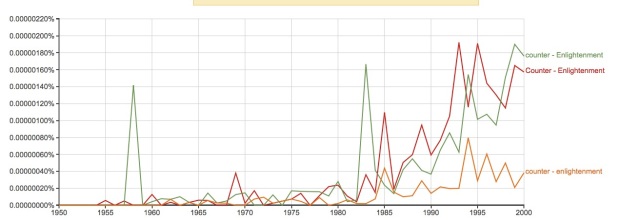
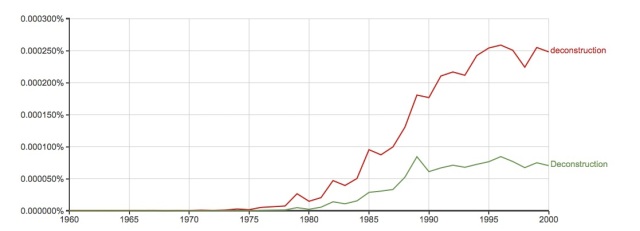
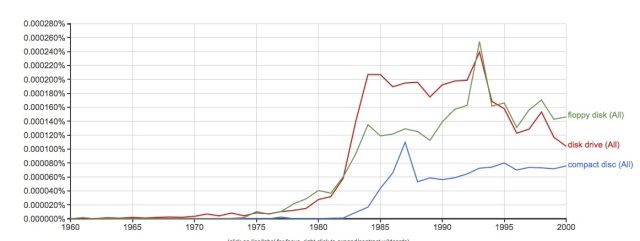
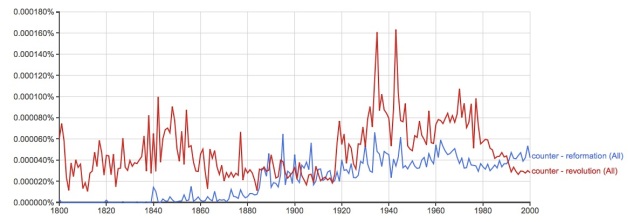
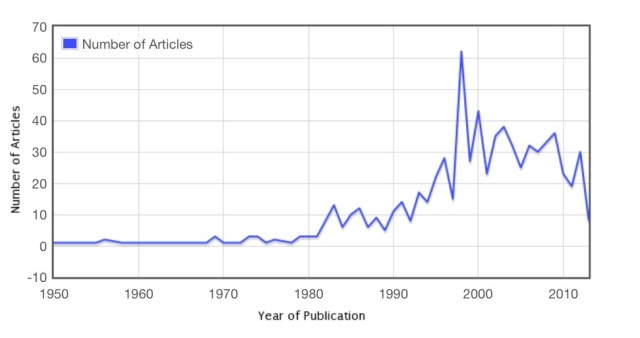
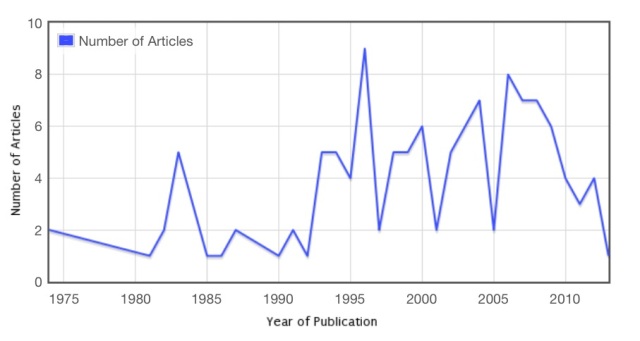
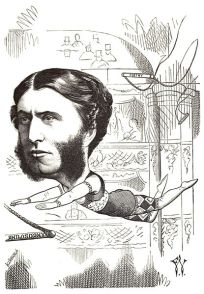




Hi thankss for sharing this
Pingback: William Barrett, Lionel Trilling, and the “Residual Legatees of the Enlightenment” (Fabricating the Counter-Enlightenment Part V) | Persistent Enlightenment
You’re more than welcome. And thanks for all the interesting things you’ve been doing on Noir-Realism.
Pingback: Enlightenment Science and the Mathematization of Reality: Competing Views | noir realism
I agree with your premise, but have a question: Even though the concept “Counter-Enlightenment” is a late conception – both inventing itself in Berlin and used by him, what of the thrust of the actual ‘use’ of that term as a useful catch-all phrase for the study of reactionary history? Should the term be thrown out? Is there a better approach toward writing a history of those like Burke, Carlyle, Boland, etc. who were definitely against certain forms of radical enlightenment notions? And, what of Johnathan Israel’s three volume history of the enlightenment, or even Peter Gay’s older introduction of all the aspects? They do not use that term per se, but see definite enemies of the philosophes and their ideas, etc. And see, as well, different or even multiple enlightenments rather than just one unitary structure under the concept of Enlightenment itself. Are their concepts that are more appropriate for this, or do you see such concepts as a reductionary ploy that is too broad a concept to be of any use?
Far be it from me to tell people how to talk, but I tend to think that “enemies/critics/opponents of the Enlightenment” is preferable to a construct like “the Counter-Enlightenment” in that it doesn’t assume that there is a monolithic “Anti-Enlightenment” tradition running from the opponents of the French revolution down to the present. That strikes me as the fundamental misconception from which many of Sternhell’s more questionable conclusions flow. For this reason, I think Graeme Garrard’s use of the plural in his study of “counter-Enlightenments” makes a lot of sense. I wrote a bit about Sternhell’s comments on Garrard’s book (he patched a long footnote into the English translation of The Anti-Enlightenment Tradition that strikes me as worth discussing) but wound up pulling it from the last post because it was getting too long; at some point I may work it up as a separate post, but I’m ready to take a break from writing about the Counter-Enlightenment for a few weeks. The damned thing is a swamp.
In terms of my own interests, I’ve found the notion of “Counter-Enlightenment” useless, for reasons that Pocock lays out rather nicely in the passage I quoted from him in the first post in the series. I’m interested in trying to understand the various ways in which the term “enlightenment” was being contested during the period that (to mark some boundaries) stretches from the exchanges between Mendelssohn and Kant in 1784 to the planned discussion between Foucault and Habermas in 1984. Trying to label the various sides in these contests as part of “the Enlightenment” or “the Counter-Enlightenment” positions is a dreadful way of trying to trace the history of a contested and remarkably pliable concept. It assumes that there is a “final sense” of Enlightenment that is being contested, as opposed to a contest between different notions of what has counted as “enlightenment.”
I’m trying to come up with something sensible to say about Jonathan Israel, but just when I think I’m getting a grip on what’s going on, another 1000 page book arrives. I wish I could match his work ethic, but occasionally I need to make dinner and go to sleep.
Haha… I understand. Yea, I’ve found it all to be a jungle, and these all inclusive unities of Enlightenment and Counter-Enlightenment seem more like reductionary myths rather than useful concepts. Because as you say the whole era in questions was ‘contested’ and these actual individuals did not consider themselves within these terms. My reasoning is based on just looking at our own time: in the sciences of let’s say one specific one – neurosciences there is an extreme shift between nominalists and realists with no real demarcation or neutral zone so to speak.
I’ve always gone along with Hume in the fact that he felt we should balance and way the propositional and non-propositional forces at work in studying history. There can be no unified field theory for history, and reducing our study to notions of Enlightenment, Renaissance, etc. are just useful conventions, or as we might say now – scholarly fictions and marketing labels rather than true categories that can help us understand the truth of history.
Anyway appreciate your input!